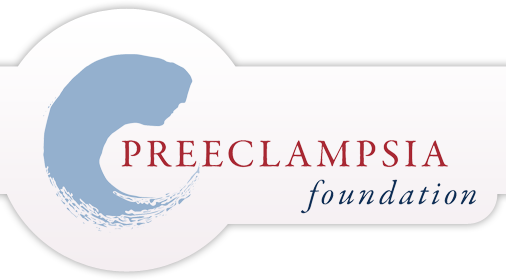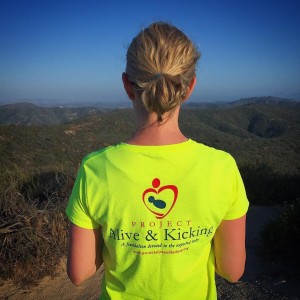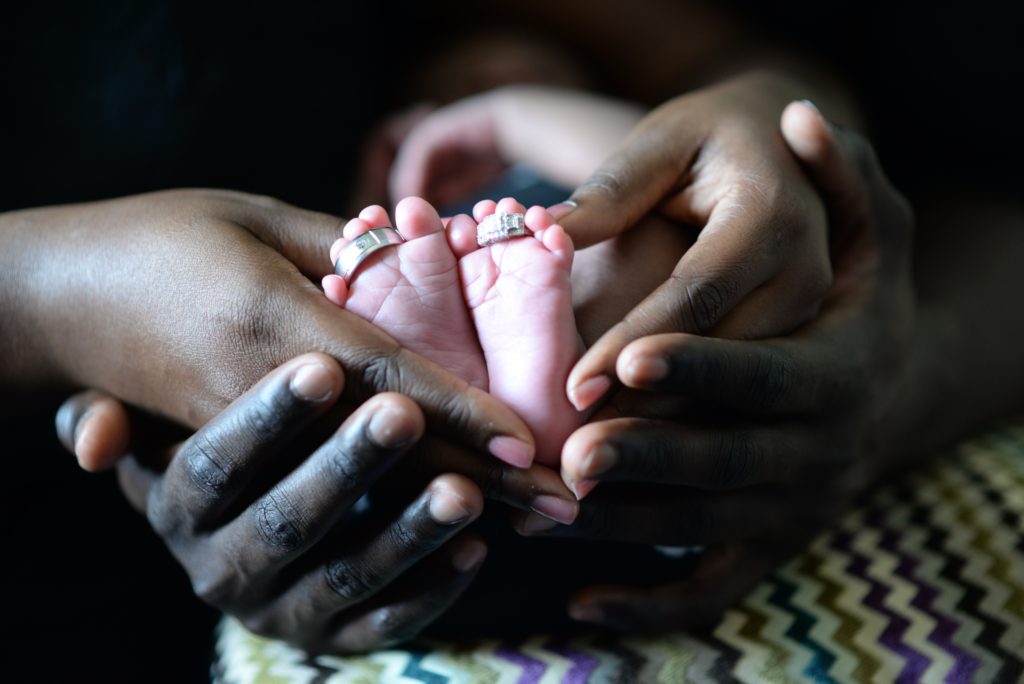My Second Trimester
Week 19
Estimated Reading Time: 25 minutes Your baby may now be sucking a tiny thumb, shifting a little head or creating other diminutive movements that you may begin to sense. Your voice, speaking, humming and crooning, is the most pronounced sound your baby is now hearing.
Your baby may now be sucking a tiny thumb, shifting a little head or creating other diminutive movements that you may begin to sense. Your voice, speaking, humming and crooning, is the most pronounced sound your baby is now hearing.
Now your baby is acquiring a white, slippery, cheese-like covering called vernix caseosa. This layer will form over baby’s fine hair (lanugo) which now jackets the skin. Although the amniotic fluid which fills your baby’s uterine environment will protect your baby from bangs and bumps, the vernix caseosa aids in protecting the baby’s fragile skin from scrapes and chaffing that may occur from your baby’s immersion in this fluid.
Little kidneys continue working as urine is expelled into the amniotic environment holding your baby. The placenta, a major part of your baby’s life support system, is also busy working to eliminate these waste products from your baby’s surroundings. The vagina and uterus may begin developing in baby girls.
Your baby is about 6 inches long and the size of a shiny green zucchini.
Preeclampsia
One pregnancy complication affecting thousands of women and babies that has risen by twenty-five percent over the last twenty years is “Preeclampsia.” This serious medical problem affects 5%-8% of all pregnancies and 15% of these women develop HELLP (Hemolysis Elevated Liver enzymes and Low Platelets) Syndrome. Preeclampsia is a major source of maternal and infant illness and death. It usually occurs during the last half of pregnancy and rarely before Week 20; it may also strike in the postpartum period.
If this is your first pregnancy, the symptoms of nausea, vomiting and lower backache may be present.
You may be at risk for developing preeclampsia if any of the following apply to your Personal History:
- First pregnancy.
- Obesity (BMI>30).
- African-American or Caribbean descent.
- Over 35 or under 20 years of age.
- High blood pressure before becoming pregnant.
- High blood pressure or preeclampsia in previous pregnancies.
- Diabetes before or during pregnancy.
- Kidney disease.
- A mother or sister who had preeclampsia.
- Multiple gestations (e.g., twins, triplets).
- Rheumatoid arthritis, lupus or other autoimmune disorders
- Some blood clotting disorders.
- Polycystic ovarian syndrome.
- In vitro fertilization.
- Sickle cell disease.
Or your Family History:
- Preeclampsia.
- High blood pressure or heart disease.
- Diabetes
Early Onset Preeclampsia is defined as preeclampsia resulting in the delivery of your baby before Week 34; babies delivered earlier than expected may face lifelong disabilities. Early onset preeclampsia may result in sudden health complications for mothers and escalate their risk for long-term cardiovascular disease. Women who have had preeclampsia have roughly double the risk for heart disease and stroke over the next five to 15 years of their lives. Early onset preeclampsia contributes more to the morbidity and mortality of pregnant moms and their babies than preeclampsia acquired late in pregnancy.
Preeclampsia is typically hallmarked by an increase in blood pressure and signs of damage to another organ system, most often the liver or kidneys. A significant level of protein in the urine (proteinuria) is no longer a criterion for diagnosing preeclampsia, and may ultimately delay diagnosis and treatment. Preeclampsia may be diagnosed without proteinuria when there are signs of damage to other organs.
Symptoms of preeclampsia may include, but are not limited to:
- High blood pressure.
- Weight gain of more than 5 pounds in one week.
- Edema with swelling in the face, hands and feet.
- Nausea and vomiting.
- Headache.
- Blurred or altered visual disturbances.
- Chest pain or shortness of breath.
- Low back pain.
- Pain in the upper right abdomen area.
- Shoulder pain.
Remember that even a slight rise in your blood pressure may be a sign of preeclampsia. Women whose blood pressure had been normal or women who already have naturally high blood pressure may begin to see a change, usually after Week 20. Make sure you are evaluated at every visit to ensure that you are not exhibiting any signs or symptoms of preeclampsia. Call your health care team if you experience any symptoms of preeclampsia for the first time. If you are unable to reach them, go to the ER or the L&D to be evaluated by a health care provider.
“The earlier you know, the earlier you and your doctor can take steps to prevent or delay the onset of preeclampsia.”
HELLP syndrome is a life-threatening pregnancy condition and considered a severe variant of preeclampsia. Approximately 45,000 women will develop HELLP syndrome in the United States every year. The physical symptoms of HELLP syndrome may appear to be preeclampsia; it may sometimes be mistaken for the flu or gall bladder problems. It may include one or all of the following:
- Abdominal or chest pain and right upper quadrant pain (from liver swelling).
- Nausea/vomiting/indigestion with pain after eating.
- Headaches that won’t go away, even after taking medication such as Tylenol.
- Shoulder pain or pain when breathing deeply.
- Bleeding.
- Changes in Vision: blurred, seeing double or flashing lights.
- Swelling of the face or hands.
- Shortness of breath: breathing with difficulty, gasping.
The only cure for preeclampsia begins with the delivery of your baby. Your health care team will take many factors into account to manage your preeclampsia such as when to deliver, gestational age, the health of you and your baby and a careful evaluation of how the disease is progressing. Ultrasounds may be essential to monitor your baby’s growth and medications may be indicated for you. Hospitalization may also be required as your symptoms may unexpectedly worsen necessitating the need for the careful and precise monitoring of both you and your baby.
 Preeclampsia Foundations states: “When we urge women to trust themselves, we are referring to the intuitive feeling that preeclamptic women often have that “something is not right.” While these feelings may be nothing, it is important for women to report any concerns and for care providers to be diligent, particularly if accompanied by other signs or symptoms.”
Preeclampsia Foundations states: “When we urge women to trust themselves, we are referring to the intuitive feeling that preeclamptic women often have that “something is not right.” While these feelings may be nothing, it is important for women to report any concerns and for care providers to be diligent, particularly if accompanied by other signs or symptoms.”
If left untreated, preeclampsia can be dangerous and even fatal for both you and your baby. To ensure your and your baby’s wellbeing and to reduce bad outcomes from preeclampsia, it’s important to:
- Know the warning signs listed above.
- Trust yourself.
- Attend regular prenatal visits.
- Have a strong partnership with your health care team.
- If warning signs develop, call you health care team ASAP!
For further information regarding the signs, symptoms, care, treatment and how both preeclampsia and HELLP syndrome may affect you and your baby, please visit the Preeclampsia Foundation.
The Preeclampsia Registry is the first and only global collection of detailed patient-reported information for use by researchers! If you would like to be a part of the solution to help accelerate the discovery of the causes and options for prevention, diagnosis and treatment of preeclampsia, please visit The Preeclampsia Registry.
Stillbirth
 Stillbirth. A word noiselessly tucked away and believed to be almost nonexistent. Then surprisingly, an ultrasound is ordered. A baby is motionless; the heartbeat is absent. The devastation of stillbirth arrives crushing all.
Stillbirth. A word noiselessly tucked away and believed to be almost nonexistent. Then surprisingly, an ultrasound is ordered. A baby is motionless; the heartbeat is absent. The devastation of stillbirth arrives crushing all.
Stillbirth is not a cause of death but rather a term indicating a baby has died in utero. Amazingly, there are over 35 classification systems for perinatal mortality worldwide, and shockingly there is no universal consensus on which one to standardize! This makes the gathering, compiling, comparing and frequency of stillbirth data extremely difficult to attain.
According to the Centers for Disease Control and Prevention (CDC), stillbirth refers to the loss of a baby of twenty or more weeks gestation before or during delivery. Approximately, one out of every 160 pregnancies tragically end in stillbirth in the United States; this rate is more than ten times the number of babies lost to Sudden Infant Death Syndrome (SIDS).
Stillbirth is categorized by the CDC as either “early, late, or term:
- An early stillbirth is a fetal death occurring between 20 and 27 completed pregnancy weeks.
- A late stillbirth occurs between 28 and 36 completed pregnancy weeks.
- A term stillbirth occurs between 37 or more completed pregnancy weeks.”
Why Project Alive & Kicking (PAK)
 The moms of Project Alive & Kicking (PAK) delivered their babies in silence in various parts of the country. Not one had considered stillbirth as even a remote possibility so it sounded feasible when reassured by their health care teams that stillbirth was a “rare and infrequent event.” As paths crossed and stories exchanged, a collective query evolved, “How can stillbirth be considered rare or infrequent when we have all lost our babies?”
The moms of Project Alive & Kicking (PAK) delivered their babies in silence in various parts of the country. Not one had considered stillbirth as even a remote possibility so it sounded feasible when reassured by their health care teams that stillbirth was a “rare and infrequent event.” As paths crossed and stories exchanged, a collective query evolved, “How can stillbirth be considered rare or infrequent when we have all lost our babies?”
The grim yet scientific realities of stillbirth began to surface. We learned that 26,000 babies were stillborn every year in the USA and this figure skyrockets to three million stillbirths globally. It was obvious these massive figures boasted of nothing “rare or infrequent;” they justifiably expose incomprehension and confusion.
Ignited by our new stillbirth reality, we quickly agreed that no one should ever have to experience our pain and isolate grief. The time had come to rein in stillbirth.
Marketing and Sales Coordinator, PAK’s Co-founder and President, Nicola Swanson lost her niece at 37 weeks due to an Umbilical Cord Accident (UCA). Her loss kindled a newfound passion for promoting pregnancy education and awareness for all expecting moms.
Now the mother of three, Nicola realizes that every woman’s pregnancy journey involves time, care, knowledge and determination. She stresses to all expecting moms that There’s More to Pregnancy Than You Think. Understanding yourself, your baby and every step of your shared journey is every mom’s daily responsibility.
PAK’s Roots
In 2012 Project Alive & Kicking (PAK), a 501(c)(3) nonprofit organization was officially established. Empowering moms and saving babies became PAK’s number one priority. In guiding PAK’s quest to bring the peril of stillbirth resulting from an UCA to light, a carefully watched 40-week gestational journey with mom in the driver’s seat began to unfold. Prenatal knowledge, a newfound awareness of pregnancy and the tools needed to help expectant moms become proactive with their gestational journeys emerged.
We then learned that approximately 1200 women in the USA will experience complications during pregnancy or childbirth that prove fatal every year, and another 60,000 women will endure complications that are near fatal. Enter Maternal Morbidity and Mortality. Immediately we realized that the risks of pregnancy and delivery day are hidden alongside stillbirth. The Moms need to know!
Writer, editor, former lawyer, PAK’s Co-founder and Vice President Yelda Basar Moers lost her full-term daughter Olivia to an UCA four days past her due date. Yelda noticed Olivia’s movements had slowed down and mentioned this to her doctor at her last office visit. She was reassured by his words, “That babies slow down their movements at the end of the pregnancy.”
Searching for answers in the days and months following the loss of Olivia, Yelda attended an International Conference on Stillbirth, SIDS and Infant Survival in Baltimore, Maryland. She knows that the stars must have been aligned when she met Stacy Crews and Connie Hosker. After hearing about Project Alive & Kicking, Yelda wanted to get involved and turn her loss into positive energy by strengthening and empowering all pregnant moms and saving their babies.
Reflecting on Olivia’s stillbirth, Yelda admits, “If I knew then that cord issues and fetal distress could cause babies to slow down their movements, I would have insisted that he (her doctor) check her umbilical cord, or I would have pushed for more testing, more monitoring.” Yelda is now a firm believer in listening to her body and “to her Inner Voice that is sometimes whispering and sometimes screaming.” She penned PAK’s mission:
To empower expectant mothers by sharing information and educational materials about healthy pregnancies, fostering an awareness of daily fetal movements, and guiding them with the actions they can take to help their babies come into the world thriving, alive and kicking.
PAK is here to help every mom have an amazing, fabulous, empowered pregnancy; and end stillbirth. Thanks to the Internet and social media, expecting moms are becoming inspired, knowledgeable and savvy. They are beginning to realize that stillbirth is a possible reality of pregnancy and they desperately want to keep themselves well while keeping their babies’ safe in utero.
Litigation Paralegal, PAK’s Co-founder and Chief Operating Officer Sarah Hosker was in London completing a study-abroad program when she learned of the death of her niece less than a month before her due date due to an UCA. This loss stirred her interest in raising pregnancy awareness.
Sarah’s knowledge of social media together with her love of reading and creativity were the perfect mix for her immersion in PAK. Sparking into every avenue of social media, PAK’s tagline “My Empowered Pregnancy” and mobile app, ME Preg became PAK’s pledge to every mom for a safe and healthy pregnancy.
The Causes
Babies are lost to stillbirth not only from the Umbilical Cord, but also from Group B Strep (GBS), Intrahepatic Cholestasis of Pregnancy (ICP), Preeclampsia and Gestational Diabetes to name a few. The CDC cites three broad categories contributing to stillbirth:
- Problems with the baby (birth defects or genetic problems).
- Problems with the placenta or umbilical cord (this is where the mother and baby exchange oxygen and nutrients).
- Certain conditions in the mother (for example, uncontrolled diabetes, high blood pressure, or obesity).
No race, income level, age group or ethnicity is immune to stillbirth. Although the causes of many stillbirths are unexplained or unknown, there are additional maternal risk factors that may increase the likelihood of stillbirth. These factors may not only increase the risk for a stillbirth but are also linked to serious pregnancy outcomes such as preterm birth. They include:
- Being of black race
- Being a teenager
- Being 35 years of age or older
- Being unmarried
- Being obese
- Smoking cigarettes during pregnancy
- Having certain medical conditions, such as high blood pressure or diabetes
- Having multiple pregnancies
- Having had a previous pregnancy loss
Certified Financial Planner, PAK’s Co-founder and Secretary Stacy Crews, lost her full-term daughter Carly Elizabeth at 38-weeks gestation to an UCA. We all know that Christmas time is a hectic time of year for all moms with little ones in school. Stacy was busy all day with her son’s school Christmas party and that evening reflecting on the day thought to herself, “Wow, she sure has been quiet.” Later she headed to L&D to be checked. “I clearly remember thinking that the hospital staff was going to laugh at me and call me crazy for coming in. I’m eight months along with a textbook pregnancy. People don’t just lose healthy babies at that stage of their pregnancy. I passed the 12-week mark a long time ago! The thought that she could die absolutely never crossed my mind. At that time, I didn’t even know that women lost babies this late in pregnancy, especially healthy babies.”
Stacy is a founding member of PAK believing in their mission to educate and empower pregnant moms. She learned that not every pregnancy works out as planned. We need to work proactively to allow our babies the best outcome at birth and, “WE ONLY GET ONE SHOT AT THIS!” Stacy sums up her thoughts, “PAK is dedicated and motivated to provide the kind of education that pregnant moms need in a way that no other organization or website I know of can.”
The Loss

For most expectant moms, a healthy delivery day is the eagerly awaited outcome. However, one percent of all moms globally will endure the desolation and agony of their babies being stillborn. The passage of a stillbirth mom is fraught with heartache and grief of the most profound kind. Please remember that numerous stillbirth moms were never considered “high risk.” They were healthy, happy, walking encyclopedias’ of pregnancy know how!
So, is it likely you will encounter a woman who will deliver a stillborn baby at some point in your lifetime? Yes.
The Yes
In most cases of stillbirth, mom will notice a decrease in fetal movement, or an unusual level of activity for her baby (an increase or decrease in fetal movement), or sudden changes in fetal movement. She may also suddenly realize that her baby is not moving; she cannot needle her baby to give a kick or a punch. After calling her health care team she visits their office or goes to Labor & Delivery (L&D). An ultrasound is ordered. A baby is motionless; the heartbeat is absent. The devastation of stillbirth arrives crushing all.
Because of stillbirth’s profound odds, being familiar with the steps to navigate the loss will provide comfort and peace in the days ahead for all concerned.
If stillbirth happens prior to delivery, mom’s health care provider may induce labor or perform a Cesarean section (c-section) to deliver her baby. In some cases, mom may wait and go into labor on her own, which may happen within two weeks of her baby being stillborn.
If mom is a religious or spiritual person, she may wish for someone in her family to contact her religious affiliation. If none is known but a religious presence is requested, most hospitals have a chaplain who will provide this essential support before or following delivery. The nursing staff will be able to assist with this need.
The Decisions

After delivery the reality of stillbirth sets in as mom’s physical healing begins. The hormonal changes taking place signal a baby has been born. Breasts will become engorged with milk and painful; nature will pursue a pre-pregnancy body. Mom should voice any concerns or questions regarding the days ahead with her health care team and nursing staff.
The decisions no mom should ever have to contemplate must now be made swiftly such as…
Will she see and hold her baby? Many parents do, many do not. There is not a right or wrong decision however, the current thinking is “Yes,” mom should see and hold her baby. Many moms decide to bathe her baby, have skin-to-skin time, sing a special song, and even read a book to her baby. Some want to create every memory possible to last them their lifetime. The nurses and religious personnel will help guide mom through her decisions if needed.
Photographs of the baby may be taken if mom chooses to see her baby. Family members may take photographs or Now I Lay Me Down To Sleep (NILMDTS) may also be contacted to provide remembrance professional portraiture at no charge. If mom chooses to take photographs, she may want to consider a picture with each family member separately as well as a group family picture.
Thousands of hospitals around the world will provide mom with a “Cuddle Cot.“ This unique cot is a cooling cot giving the gift of time and enabling mom to keep her baby with her in her room.
A keepsake box including a lock of the baby’s hair, the blanket the baby was wrapped in and possibly hand and foot prints may be offered. Request this keepsake box be made for the days ahead.
In the hopes of preventing a future stillbirth and to gain further insight into the cause of stillbirth, parents will be encouraged to allow an autopsy to be performed on their baby.
A recent article, Placenta and Umbilical Cord Cause in Antepartum Deaths, concurred that in order to reduce the fetal death rate, parents and their health care teams must be given answers to the probable cause of a stillbirth. These answers may be pivotal for a subsequent pregnancy.
“We have to insist on the autopsy of the placenta and umbilical cord in order to gain the appropriate information in counseling the parents.”
Mom ultimately makes this determination. In the USA, state laws require the reporting of fetal deaths, and federal law supports national collection and publication of fetal death data. The National Vital Statistics System (NVSS) released the first ever report on cause of fetal death using national data in 2016.
With the help of her family and loved ones, the final choices of a special outfit for her baby to wear when leaving the hospital, the appropriate Funeral Arrangements and burial versus cremation decisions are now poignantly made. Countless hospitals are now allowing families to take their baby home in a cuddle cot to spend time with them before the funeral, if desired. Allowing families to take their baby home from hospital if they wish may help the grieving process.

Remember, the Bereavement Coordinator, nursing staff and religious personnel are a wonderful support system during this time and will be able to help with any questions and concerns that may arise.
Love, patience and understanding are essential in handling mom’s decisive wishes.
The Walk Ahead
Enduring a stillbirth is a very difficult and emotional journey. Every mom should be offered guidance in coping with the loss of her precious baby while in the hospital. She should seek professional counseling and join support groups when discharged for the days ahead. PAK’s Medical Advisor, Dr. Jason Collins will be glad to speak with and answer mom’s questions regarding her baby’s stillbirth.
Mom’s next appointment in the weeks following her loss with her health care team will hopefully shed light on the cause of her baby’s stillbirth. If an autopsy was performed, explanations may exist. She may also wish to find answers to the following queries such as:
- Is the exact cause of my baby’s stillbirth known?
- Was the umbilical cord involved? If so, how?
- Was the placenta a factor? If so, how?
- Was an infection present?
- Is genetic testing needed?
- Will my risk of stillbirth be increased for future pregnancies?
- When should I become pregnant again?
- Will I be considered a “High Risk” pregnancy in the future?
- Will you recommend a Maternal Fetal Medicine Specialist?
- What will be done differently for me during my next pregnancy?
- What will be done differently for my baby during my next pregnancy?
The Rainbow Pregnancy

The arrival of a Rainbow Baby is an unparalleled experience. In the words of Jennifer Kulp-Makarov, M.D., FACOG,
“A rainbow baby is a baby born after a miscarriage, stillborn, or neonatal death. It is called a rainbow baby because it is like a rainbow after a storm: something beautiful after something scary and dark. It is an extremely emotional and devastating experience to lose a pregnancy [or baby]. To create a life or bring a baby into the world after such a loss is amazing like a miracle for these parents.”
Retired nurse and PAK’s Founder Connie Hosker realizes the need for all expectant moms to better understand their pregnancies. After losing her first granddaughter to an UCA she was determined to empower all expectant moms through awareness, a proactive attitude and vigilance. A level of the most undeniable love surfaces after a stillbirth. Connie understands that a pregnancy following a stillbirth is usually an absolute must although it will be fraught with anxiousness and trepidation.
Mom’s subsequent pregnancy will be considered “High Risk”. If her pregnancy is not considered high risk, she should discuss this concern with her health care team along with the option of transferring her care to a new team. As a high-risk mom, she will be referred to a Maternal Fetal Medicine Specialist for exceptional care and specialized attention that may include more frequent office visits, additional ultrasounds, regular monitoring and perhaps specialized testing.
PAK’s encourages every mom to use our free mobile app ME Preg that guides her through each week, month and trimester allowing her to work alongside her health care team. Mom’s newfound knowledge enables her to question what is not understood, voice any concerns, watch and count movements, and understand the necessity for increased monitoring if needed to be sure she and her baby are both doing well. PAK envisions this partnership becoming the new gestational norm with mom taking a very proactive role in her ensuing pregnancy.
If mom does not own a Smartphone, PAK’s My Empowered Pregnancy Checklist and Mom & Baby Tracking Chart are available online in both Spanish and English to record all of mom’s data.
The Movements of Pregnancy

Movements are key! Please note it’s a fact that a gradual decrease in fetal movement was noticed by fifty percent of mothers a few days prior to the death of their babies. A recent study in Norway noted a thirty percent reduction in stillbirth when pregnant women were encouraged to track fetal movement by their healthcare provider, and were told to immediately seek medical attention when they noticed any decline in their baby’s movements.
Beginning at Week 20 mom’s encouraged to keep a daily journal of her baby’s movements. Taking note of when her baby is stirring or slumbering is fundamental to her baby’s being well. Learning her baby’s daily routine enables her to move easily into Movement Counting beginning around Week 28.
ME Preg’s movement tracker kicks in at Week 28. Mom will track her baby’s movements two to three times a day with ME Preg and a record will be kept of her baby’s activities. If for any reason mom detects an unusual level of activity with her baby (an increase or decrease in fetal movement), notices any sudden changes in movement, or once movement counting has commenced mom’s unable to obtain the usual 10 movements in the normal amount of time, she will call and visit her health care team immediately to discuss any of her baby’s changes in movement and to make sure that her baby is well.
If mom is unable to contact or visit her health care team, she will go to Labor and Delivery (L&D) as most L&D units will see her immediately for Decreased Fetal Movements (DFM), or go to the nearest Emergency Room (ER).
Chef, Full-time Mom, PAK Co-founder and Board Director Amanda Karkut lost her first child Addison three days before her due date to an UCA. Compelled to help pregnant women become advocates for their own health and the health of their babies, she helped start Project Alive & Kicking. Amanda knew PAK could make a difference!
For more information on movement counting, visit My Empowered Pregnancy, My Third Trimester, Week 28 on this website. Download ME Preg to keep track of your movement counting; if you don’t have a smartphone, please print our Mom & Baby Tracking Chart in either English or Spanish.
Ultimately Piecing It All Together
Dr. Jason Collins is a member of PAK’s Medical Advisory Committee (MAC) and a huge proponent of Doppler and 3D Ultrasounds during the third trimester to monitor the baby’s umbilical cord and placenta. He advises these additional ultrasounds be done around Weeks 28, 32 and 36. An ultrasound will alert mom to any umbilical cord issues such as Nuchal Cords that may be present. Although many health care teams consider the nuchal cord not to be an issue, Dr. Collins attests that if a nuchal cord remains in place, it should be monitored throughout the duration of the pregnancy. If mom’s health care team refuses to do additional ultrasounds, she may visit her local “Boutique Ultrasound” such as NEW Miracles Studio 3D & 4D Ultrasounds in Charleston, South Carolina to have them done. To find out more about nuchal cords and how this umbilical cord concern might impact mom’s pregnancy, visit My Empowered Pregnancy, My Third Trimester, Week 29 on this website!
So, how do we know that our babies are well when many stillbirths happen for no known reason? Dr. Mark Hosker, a board member and Chair of PAK’s Medical Advisory Committee (MAC) was blindsided in the summer of 2009 by the stillbirth of his first granddaughter. As a member of the medical field, he was shocked to learn that stillbirth is more common today than ever before. His newfound commitment to help the medical community and parents answer the questions about stillbirth for which there are little explanations or answers is his utmost concern.
Mark advocates empowering every pregnancy with prenatal knowledge trimester by trimester for a healthy outcome. He encourages expectant moms to work closely with their health care teams, attend all their prenatal visits and follow Dr. Collins’ concise ultrasound guide for visualizing the umbilical cord. He implicitly voices, “You know your baby best, so always trust your instincts”.
Stillbirth is an extremely challenging poignant journey. We understand what every loss mom is enduring. We have been there. Our hope is to empower every mom so that if she have a question, comment, concern or fear, she will discuss it with her health care team. This partnership is invaluable for a healthy delivery day.
If you would like more information on stillbirth, please email us at, info@projectaliveandkicking.org or visit the CDC.